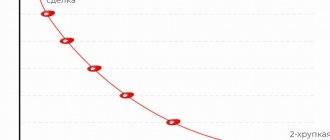2
When it comes to paying alimony, this evokes the association of withholding payments for a minor child from the father. Most often, collection is carried out forcibly, less often - a parent sometimes voluntarily allocates regular funds to his ex-wife, who was left with children born from the marriage after the divorce.
Usually the child remains with the mother, but there are exceptions when it is the man who bears all the worries about the children forgotten by the unlucky mother and the woman has to seek payment of alimony.
When is alimony collected?
All alimony obligations are subject to indexation, regardless of their purpose. Russian legislation regulating family relationships emphasizes that the maintenance of minor children is equally the responsibility of both parents.
In case of divorce, or actual evasion of parental duty, the party caring for the joint child has the right to receive financial support from the second half until the day the child turns 18 years old.
In some situations, if, upon reaching adulthood, a child is diagnosed with the first disability group - which implies complete disability and the need for constant outside care, the obligation to provide financial assistance is practically extended indefinitely, both for the child with disabilities and for the other half who provides daily care.
It should be noted that Russian legislation in the field of family legal relations emphasizes the obligation to pay alimony to other relatives if they belong to a socially unprotected category of citizens.
For example:
- if adult children do not provide assistance to needy parents, alimony is collected from them in court, subject to monthly payment in the amount established by court decision;
- One of the disabled spouses can apply for alimony, regardless of age;
- a woman, during pregnancy and until the birth of a child, and also if she takes care of him for up to three years, must be financially supported by her husband.
Even after the dissolution of the marriage relationship, the following have the right to alimony (Article 90 of the RF IC):
- ex-wives, if the divorce was filed when the woman was carrying a child under her heart - before his birth and if the mother continues to care for him without returning to work - until the baby’s third birthday;
- former other half caring for a disabled child under 18 years of age or older, if complete disability is further confirmed and the first disability group is recognized
- the ex-husband (wife), if at the time of registration of the divorce or within a year after the breakup of family relations is declared incapacitated;
- one of the former spouses, if the marriage lasted for a long period of time, in a situation where, after a divorce, having reached retirement age within five years, the person remained below the poverty line, receiving income less than the subsistence level.
Most often, this applies to women who were engaged in housework, raising children and, ultimately, do not have an insurance record that gives them the right to receive old-age pension payments, as a result of which they receive social pensions.
Let's take a closer look at how alimony is indexed in accordance with legislative norms and whether everyone can count on an increase in payments.
The law - what establishes the indexation of alimony?
Since issues of alimony payments are regulated by family law, we turn to the Family Code in search of an answer to the indexation of funds allocated for the regular maintenance of disabled family members.
Financial assistance in the form of alimony can be provided voluntarily by agreement of the parties, officially formalized in writing and certified by a notary.
According to Art. 105 of the RF IC, it is recommended to stipulate the indexation of monthly payments in one of the terms of the contract.
If the parties did not take into account the procedure for indexing alimony when concluding an agreement, this does not mean that in the future the party interested in receiving funds for maintenance loses this right. Alimony is subject to indexation in accordance with the provisions of Art. 117 RF IC.
With the entry into force of Federal Law No. 363 of November 30, 2011, alimony is indexed in proportion to the increase in the cost of living, which is established in the region of residence of the recipient of the funds, taking into account the category of the person who is entitled to maintenance assistance.
If regional authorities do not calculate the cost of living, the cost of living accepted in Russia is taken as indicators of the standard of living.
Attention! Significant changes to the procedure for indexing alimony were made at the end of 2021 with the signing of Federal Law No. 321.
Grounds and reasons for changing alimony
Most often, child benefits are determined as a share of the total income of one of the parents. In what situations will payments be a fixed amount? By law , payments will be fixed if a parent with such obligations :
- Works on a non-permanent basis (for example, seasonal work);
- Receives a salary in kind or in the currency of another state;
- Has income that cannot be accurately calculated (for example, is an individual entrepreneur);
- He works without an employment contract and receives an unofficial salary.
The establishment of payments can be agreed upon in court or a written agreement can be concluded with a notary. In the first case, the amount is set by the court in relation to the child's subsistence level. According to Federal Law 134, the size of fixed payments can be changed, since the monthly monetary norm in relation to the child is revised by the state every quarter.
The second option for determining payments is to conclude an agreement with a notary. Former spouses can independently decide on the amount of child benefit. The agreement can also specify the conditions under which the payment amount may be changed. One example of indexing is an increase in alimony by agreement by a certain factor every year.
General information about the indexation of alimony is described in a separate article prepared by our editors.
If the parents were unable to peacefully resolve the issue of determining payments, then this situation can be resolved through the court. Indexation can be carried out based on a court decision. If there are grounds for revising the amount of payment, the authority's decision will be in favor of the applicant .
The cost of living for children is calculated every three months based on price increases. Legal mechanisms make it possible to both increase this indicator and reduce it. If this value decreases, indexing will not occur.
There are regions where there is no exact cost of living for children. In such a situation, the amount of alimony will be determined based on the average allowance in the country.
Information on how alimony is indexed in a fixed monetary amount is described in Article 117 of the Family Code of the Russian Federation. Since the end of 2021, the state has adopted some amendments in relation to payments for children by parents.
According to the new conditions, the employer of one of the parents must independently recalculate fixed payments after each change in the minimum. State bodies, for example, the bailiff service, have the right to conduct an inspection for compliance with the law.
Why index?
As a rule, alimony payments are long-term obligations, not limited to one month, and often even a year.
Life goes on as usual, the economic situation in the country is changing. It is clear that for the same amount of money in different years, taking into account inflation, it is actually possible to purchase different quantities of essential goods, that is, the same amount of monthly alimony payments several years ago has a different purchasing power today.
As a consequence, it is necessary to increase the size of payments for normal maintenance, which is what indexation provides.
Conducting timely indexing allows you to:
- protect the recipient of alimony from devaluation of funds, without being forced to apply to the courts to increase the amount of payments,
- increase the level of material support, which over time would not correspond to the amount of assistance assigned by court decision or voluntarily initially.
Note: A change in the cost of living will not always lead to an increase in payments, since its size can either increase or decrease. The amount of alimony cannot be reduced, even if the cost of living is reduced!
What is indexing
Indexation means the recalculation of payments upward, taking into account the level of inflation. Indexation is necessary to ensure that the amount of payments meets the needs of the child until he reaches adulthood.
The Federal State Statistics Service of the Russian Federation constantly monitors changes in prices for food, non-food goods and services (the consumer basket). At the same time, an analysis of the income level of the population is carried out. The data obtained is regularly compared.
Based on the results of the comparison, the Government of the Russian Federation updates the following indicators:
- living wage;
- Minimum wage (minimum wage).
Legislative bodies determine how the updated indicators will be used. The authorities of each region set their own cost of living. It is regional indicators that are used in recalculation.
Alimony payments increase in proportion to the increase in the cost of living.
In what cases is alimony indexed?
By concluding an agreement on the voluntary payment of alimony, the parties agree to receive a certain amount monthly. Likewise, alimony is retained in a fixed amount when it comes to supporting adult family members. When collecting child support, if the defendant is employed, part of the earnings or other types of permanent income is withheld by court decision.
Since the amount of alimony will automatically change with a change in salary, the assigned payments are not indexed in the share ratio.
We conclude that alimony paid to:
- by agreement of the parties on a voluntary basis;
- in a fixed amount by court decision;
- in a multiple of the subsistence minimum.
Who performs the indexing?
In accordance with the provisions of Art. 117 of the RF IC, as amended, taking into account the changes made, the entities that have the authority to recalculate alimony include:
- an enterprise or organization where the payer receives monthly income;
- directly bailiffs called upon to carry out enforcement proceedings to collect regular funds for the maintenance of children and other disabled family members.
Important! Since the accountant does not have the right, on his own initiative, to index deductions from an employee’s salary, the manager needs to issue a corresponding order for the enterprise.
If it is necessary to index the amount of alimony withheld from the payer, the bailiff is guided by the established procedure, in accordance with legislative norms and methodological recommendations.
Indexation for past periods
The general norms of the RF IC establish a 3-year period for alimony collection for the past time.
These amounts are also subject to indexation. If it is established that the delay in payments occurred due to the fault of the alimony provider, then a penalty is also paid for each day of delay.
Indexing is carried out for each monthly payment separately in accordance with the period when it should have been paid.
Important! The period for submitting a writ of execution for compulsory execution is also 3 years. Therefore, we should not forget that it must be presented in a timely manner.
How to calculate indexation for alimony
Each person can independently calculate the amount of alimony he is entitled to if the cost of living has increased.
To do this, just perform simple mathematical operations, or use an online calculator completely free of charge.
Calculation formula
It is not difficult to calculate the amount due for payment, but the formulas have some differences, depending on whether alimony is assigned in a fixed amount, based on the income of the interested parties and other reasons taken into account when making a court decision, or whether the amount of maintenance is initially tied to the subsistence level minimum (its share).
In the first case, the ratio of the new value of the cost of living to the previous value, obtained by division, is multiplied by the established amount of payments and the required amount of alimony is obtained after increasing the cost of living:
NPmin / PPmin x Ap = An,
Where:
NPmin – the value of the subsistence minimum after its increase;
PPmin – the subsistence minimum for a given demographic group, established during the period of assignment of deductions;
Аn – the amount of alimony received previously;
An – the amount of deductions for maintenance until the next increase in the cost of living.
In the second case, when alimony is withheld as a share of the subsistence minimum, you need to multiply the new minimum amount established in the region of residence for this category of people, sufficient for life, by the share assigned by court decision:
PPmin x D = An,
Where:
D – multiplicity of payment from the subsistence level according to a court decision, the remaining letter designations are deciphered in the previous example.
Calculator
On the vastness of the worldwide Internet, which has entered almost every home, you can find sites offering services for calculating the indexation of alimony, taking into account changes in the level of the cost of living.
It is enough to fill out special fields, indicating the parameters of the amount of alimony, the quarter when the amount was assigned to be withheld and for what period you want to find out the amount due for payment. It is also important to take into account the region of residence and whether you receive alimony for a child or a person of retirement age.
Within a few seconds, a convenient script will give you a detailed or brief (depending on which option you choose) report on all changes in the cost of living for the specified period and the amount of alimony you are entitled to.
Below you can calculate the indexation of alimony on our website.
[calculator]
Examples and calculations
Above we have given you the formulas by which alimony can be calculated. But what about in practice? We will show you what indexation of alimony payments is with several examples.
Example 1. After a divorce, a man pays a fixed payment for child support in the amount of 8 thousand rubles. Children's subsistence level in the region is 10 thousand rubles. If the cost of living increases by 500 rubles, indexation will be carried out. The new payment amount = (8,000/10,000)*10,500. According to this formula, the amount of monthly payments will be 8,400 rubles.
Example 2. During a divorce, the parents agreed that the father would pay 2/3 of the subsistence level for child support. Initially it was 10,000 rubles, and the amount of parental payment was 6,660 rubles. An example of indexation with an increase in the minimum to 10,500 rubles will look like this. New payment amount = (10,500*2)/3. As a result, 7,000 rubles will be transferred per child.
How to calculate alimony indexation? We read a separate article devoted to this topic.
How to apply for alimony indexation
If you look at it from the point of view of the law, no additional documents need to be submitted if there is a writ of execution for the collection of alimony from a bailiff or in an organization where funds from the income of the alimony payer are withheld.
Unfortunately, in practice, accountants do not monitor changes in the cost of living; bailiffs, citing employment, are also in no hurry to index the collected amounts of alimony until the interested person submits a written application, and in some cases they demand a new court decision on indexation of previously assigned amounts to be paid.
Procedure: where, how and what is served
If alimony is transferred to you from the enterprise where the payer works, you need to write a statement addressed to the manager in any form, adhering to the basic rules of business correspondence:
- indicating to whom the appeal is addressed and the applicant’s personal data;
- in the middle of the new line write the name of the document - in this case, “Application for indexation of alimony”;
- set out the essence, referring to the executive document on the withholding of alimony (if the court decision refers to a fixed amount) and a request to index the amount of monetary penalties in accordance with the norms of Article 117 of the RF IC;
- After indicating the date, they put a personal signature, deciphering the surname, initials of the name, patronymic.
Similarly, you can draw up an application to the bailiff service, guided by Art. 102 Federal Law No. 229, regulating the resolution of issues related to enforcement proceedings, effective with the latest amendments and additions as amended on March 7, 2018.
Statement of claim for indexation of alimony
In the event that, for some reason, alimony was not withheld for a certain period of time, or the payer, who previously voluntarily paid money for the maintenance of the child, another family member, by agreement of the parties, unreasonably stopped fulfilling his obligations, you can go to court to obtain a decision on collection debt.
An important condition for going to court is that there should be no active enforcement proceedings, in the presence of which the duty of indexation falls on the bailiff. Alas, such cases are rare in practice.
After the document enters into legal force, in accordance with the procedural legislation, it is necessary to again file claims for indexation of the amount of debt for alimony.
In other cases, drawing up a statement of claim for indexation of alimony is not required - all these issues are resolved administratively.
Application for indexation of alimony - sample
The statement states:
- Name of the FSSP department;
- Applicant's name;
- Description of enforcement proceedings: what, from whom, when recovered;
- The rationale for indexation is provided, as well as an indication of the latest indexation;
- Request for indexation of alimony;
- Date of signing and personal signature of the applicant.
A written application is submitted to the FSSP at the place of open enforcement proceedings for the collection of alimony.
Below is a sample template that you can download and use.
It is best to consult with a lawyer first.
IMPORTANT: If the bailiff does not index alimony or evades this duty, the claimant has the right to appeal the official’s inaction to the court.
Indexation of alimony for the past period
It is also possible to index alimony for the past period, but for a maximum of three years. That is, if over the past three years the established minimum has changed, and the recipient of alimony or an authorized official has not carried out indexation, this can be done in court.
The procedure for filing a claim is no different from the usual collection of alimony.
Indexation for the past period is not possible in the following cases:
- The recipient of alimony did not specifically index payments by agreement with the payer or in exchange for receiving any other benefits from him;
- The established minimum increased more than three years ago.
Judicial practice, decision
As practice shows, dissatisfied with the withholding of increased amounts of alimony due to indexation carried out by order of bailiffs taking into account the increase in the cost of living, payers go to court with complaints about unlawful actions of officials.
In such cases, the decision is made in favor of the bailiffs, in accordance with the powers given to them.
But if a bailiff refuses to index alimony obligations, the claimant can appeal against his inaction, and often such claims are resolved not in favor of the official.





